Did you know that sleeping on your side could reduce back pain and improve brain health? CNN reports that side sleepers may have a lower risk of heart disease and neurological disorders.
The research is still in its early stages, but most scientists agree that side sleeping promotes spine health.
Learning how to sleep on your side doesn’t have to be difficult.
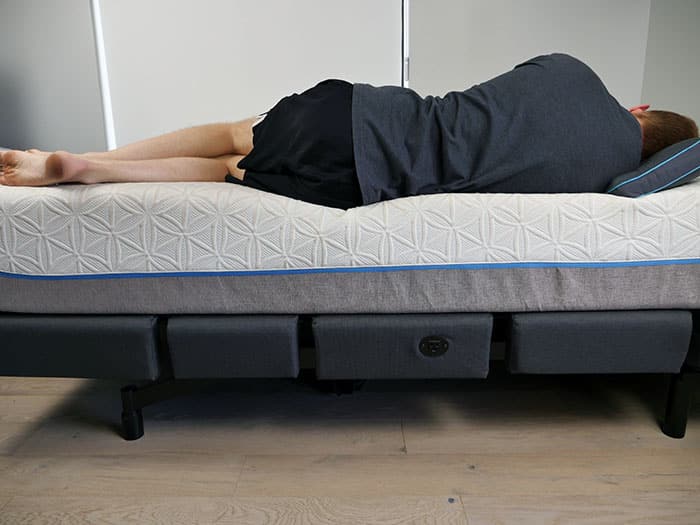
While it might take you a few days or weeks to make the switch, you can train yourself to become a side sleeper. Simply follow these seven steps.
#1. Consider Your Health Needs
A 2017 study published in the journal Nature and Science of Sleep found that more than 50% of people lie on their side during sleep. This position appears to be more common among heavier individuals and older adults.
If you have joint pain or carry extra pounds, you may find side sleeping more comfortable than back or stomach sleeping. But you need to consider your overall health before making the switch.
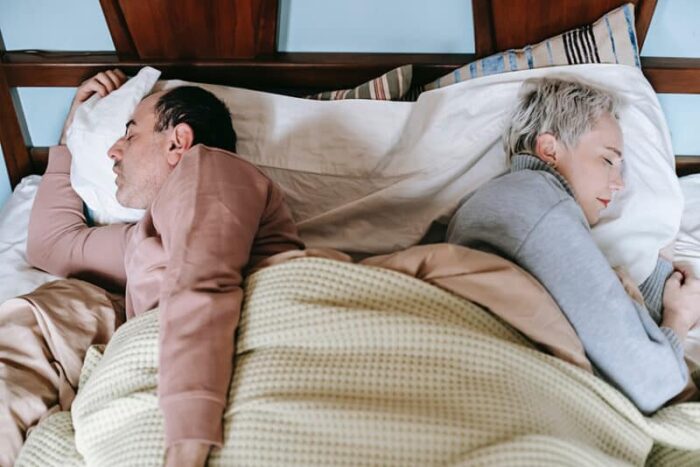
Here are some aspects to take into account:
- Healthline suggests sleeping on your right side if you have a heart condition. Resting on the left side could make things worse by causing your heart to shift and turn.
- The lateral posture can also put pressure on the nerves in your arm or leg, notes Verywell Health. This may lead to pain, tingling, or numbness in the limbs.
- Over time, this sleep position may increase shoulder, hip, or lower back pain.
With that being said, here’s what you can do to sleep more comfortably on your side.
#2. Place a Pillow Between Your Knees
Side sleeping puts pressure on your ear, shoulder, hip, knees, and ankles, explains PhysioMed. Moreover, it can pull your spine out of alignment by shifting your hips up.
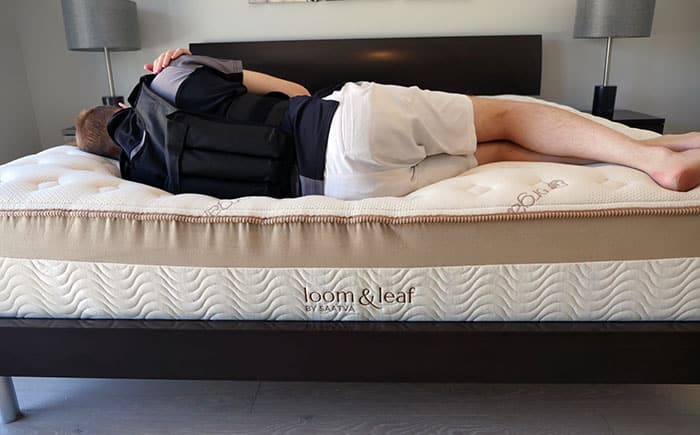
One way to prevent these issues is to place a firm pillow between your knees. This will take some of the pressure off your back and keep your spine neutral during sleep. The pillow will also reduce pressure on your knees and align the hips, which in turn may help ease hip and knee pain.
A throw pillow or cushion will work just fine, but you may also use an orthopedic knee pillow. Generally, knee pillows are made of poly- or memory foam and have an ergonomic design.
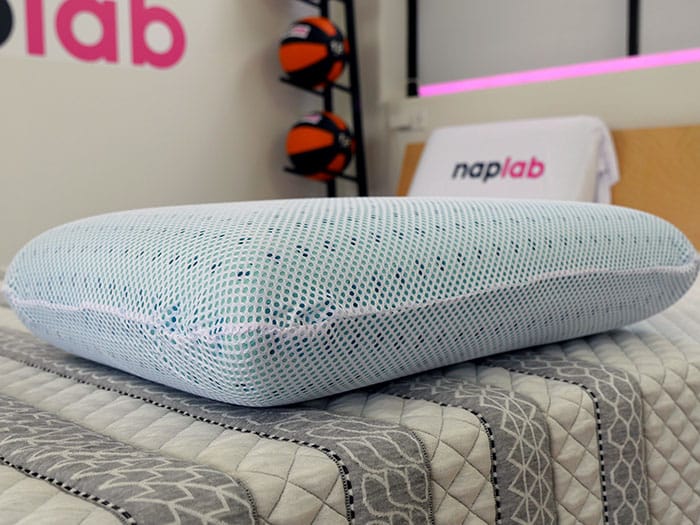
In one study, men and women with femoral fractures reported a decrease in pain after using knee pillows. As the researchers note, this method appears to be just as effective as more invasive procedures, such as skin and skeletal traction.
#3. Choose a Pillow for Side Sleepers
PhysioMed reports that neck problems develop or worsen during or after sleep in more than half of cases.
You probably know what it feels like to wake up with neck pain. In the worst-case scenario, you might not even be able to move your neck.
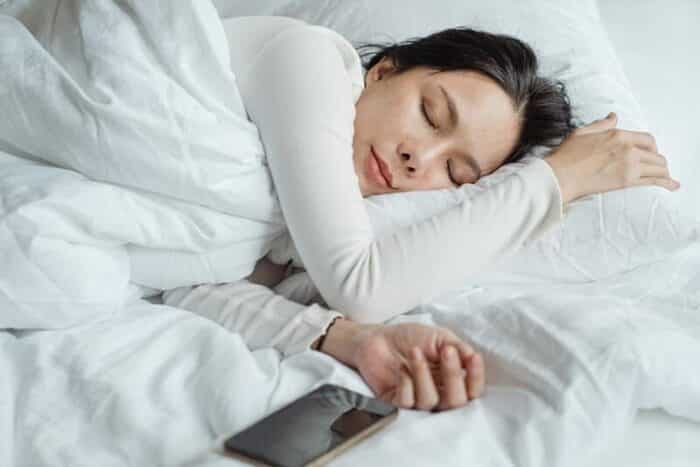
The experts at PhysioMed recommend choosing a pillow that’s high enough to fill the gap between your head and shoulder. Simply put, your neck should form a straight line when you’re resting your head on the pillow.
Another option is to invest in a neck-shaped pillow with an ergonomic design.
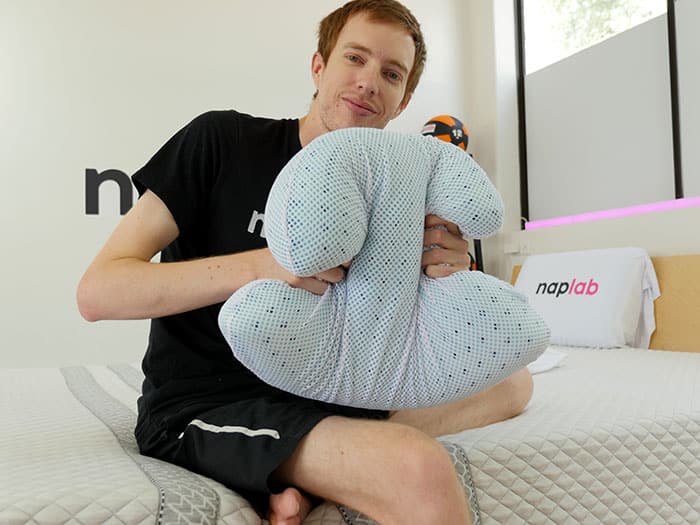
This type of pillow molds to the contours of your head, neck, and shoulders, offering increased comfort during sleep. It also keeps your spine in proper alignment, which may help prevent or reduce neck and back pain, frozen shoulder, and other aches.
For more tips, see our guide on how to sleep with a stiff neck.
#4. Use a Body Pillow for Extra Support
Body pillows can make it easier to switch from back or stomach sleeping to the lateral posture. These bedding items are up to six feet long and can mold to your body’s contours.
Here’s when and why you should use one, according to WebMD.
- You’re expecting a baby
- You are recovering from surgery
- You have back pain or herniated discs
- You suffer from arthritis or other conditions that cause joint pain
- You want to keep your spine properly aligned while in bed
Longer body pillows are particularly good for pregnant women, says WebMD. They keep your spine aligned and support your entire body, eliminating the need for extra pillows.
These accessories also take some of the pressure off your joints and muscles, which in turn may reduce pain. Over time, they may help improve your posture during sleep.

Body pillows come in all shapes and sizes—you just need to pick one that meets your needs. C- and U-shaped pillows, for example, can be a great choice during pregnancy, while J-shaped pillows provide full-body support.
As far as the material goes, you can opt for memory foam, buckwheat, polyester, down, feathers, or latex. Some pillows are filled with microbeads or Styrofoam balls.
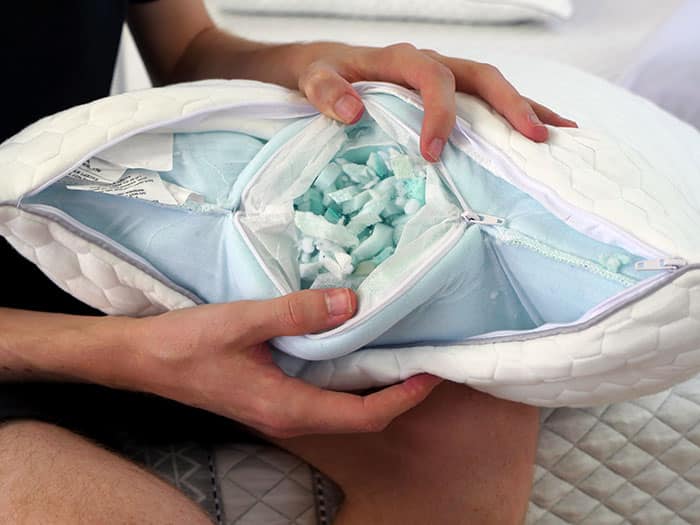
Consider using several small pillows by the time you buy a body pillow.
If, say, you sleep on your left side, place a pillow under your head, one under your left arm, one under the right arm, and one between your knees. The downside is that you might have a difficult time keeping them in place during sleep.
#5. Choose a Medium-Firm Mattress
If you’re trying to sleep on your back, it’s crucial to choose a supportive mattress.
Generally, medium-firm memory foam mattresses are the best choice for side sleepers. A soft mattress may not properly support your joints and relieve pressure points. One that’s too firm either, on the other hand, may cause discomfort and pain.
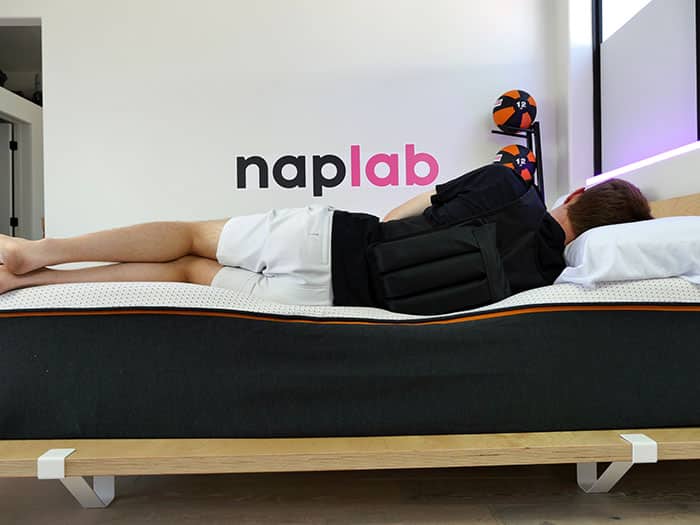
If your mattress is in good condition, it doesn’t make sense to throw it away. First, try to see if it’s suitable for side sleeping.
- Lie on your side with a pillow under your head.
- Ideally, you should feel the mattress touching your body from the ribs to the pelvis
- If there are any gaps, your mattress might be too firm.
- If the mattress is too soft, you may feel the base of the bed on your hips.
These guidelines apply to new mattresses, too. When you’re ready to make the switch, see our mattress reviews. As a general rule, pick one that’s in the 5-6 out of 10 range on the firmness scale.
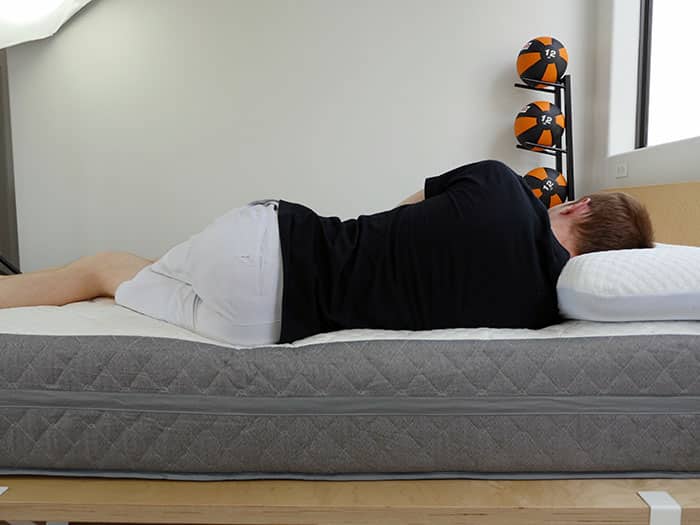
If you’re of a heavier stature you may go as firm as a 7, and if you have a petite body, you may go to a 4 out of 10. However, most sleepers will find 5-6 firmness is the right choice.
#6. Sleep on the Couch for a Few Nights
One of the easiest ways to become a side sleeper is to sleep on the couch for a couple of nights. A regular coach is narrower than most types of beds, forcing you to sleep on your side.
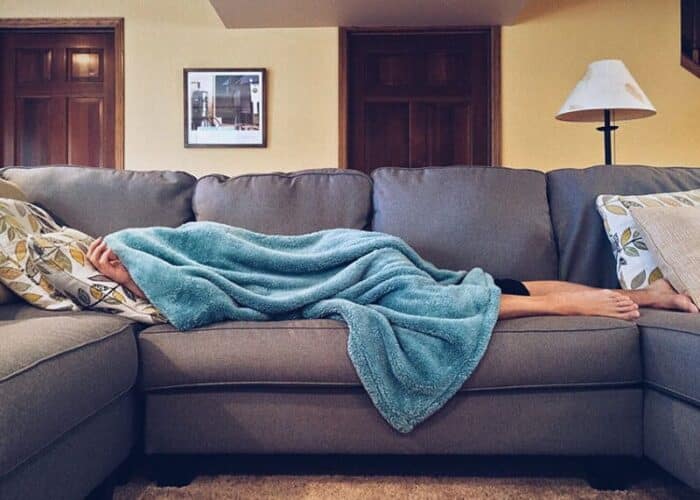
You can also use this trick to switch sleeping sides if you have heartburn or other conditions. For example, if you’re trying to sleep on the right side, simply place your back against the backrest.
Note that sleeping on the couch may worsen back or neck pain. Try this method only if you’re in good health.
Whether you decide to sleep in bed or on the couch, take a few minutes to stretch out in the morning. Start by stretching your arms and legs and then slowly get out of the bed. Do a few stretches for your back before leaving the bedroom.
#7. Slightly Lift Your Knees Toward Your Chest
About four out of 10 people sleep curled up, reports WebMD. This sleep position may reduce pressure on the back and help you maintain a neutral spine. It may also benefit pregnant women by preventing the uterus from pressing against the liver.
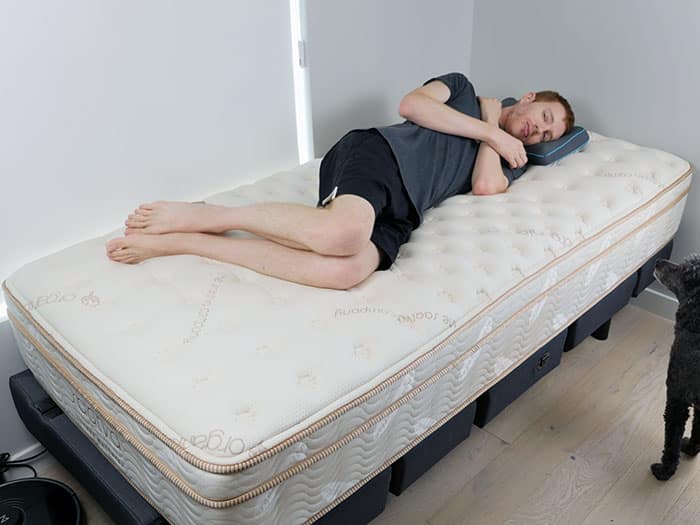
The fetal position may ease back pain, too. Sleeping curled up on your side prevents the spine from bending and may reduce disc compression during the night. That’s why many people with herniated or bulging discs prefer to sleep in this position.
To reap the benefits, try to slightly lift your knees toward your chest. Don’t just curl up like a ball, as it may affect your breathing. Assume a relaxed position and put a pillow between your legs.
Potential Benefits of Sleeping on Your Side
Wondering why you should make these changes? For starters, your sleep position has a major impact on overall health. In some cases, it may also help with neck or back pain, snoring, or breathing problems.
Johns Hopkins Medicine explains that side sleeping, or lateral sleeping, prevents the airways from narrowing or closing during sleep. Therefore, it may reduce snoring and mild apnea. Just like back sleeping, this position may also help prevent or ease neck pain, according to Harvard Medical School.
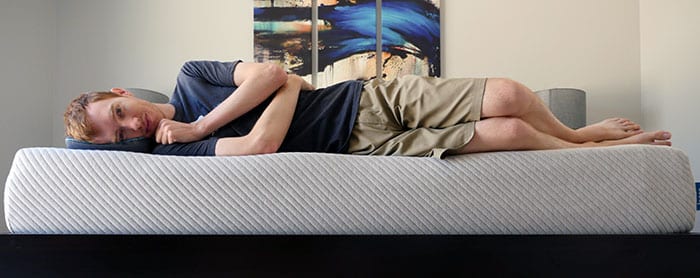
If you have heartburn or gastroesophageal reflux disease, try to rest on your left side. Sleeping on your left side may worsen these problems, says Johns Hopkins Medicine. Researchers recommend sleeping on your back rather than your side to prevent wrinkles and fine lines.
All in all, it may be worth switching sleep positions when you’re dealing with body aches. As the Cleveland Clinic notes, your body likes variety. Health experts suggest alternating between back and side sleeping during the night.
Learn How to Sleep on Your Side Comfortably
Most people change positions between three and 36 times each night. Our advice is to give your body time to adjust. Use pillows in different shapes and sizes to find what’s most comfortable. Try sleeping on the couch for several days in a row to speed things up.
If you want to sleep on your side for health reasons, consider getting a new mattress and pillows. A mattress that’s too firm or too soft can worsen back pain and disrupt your sleep.
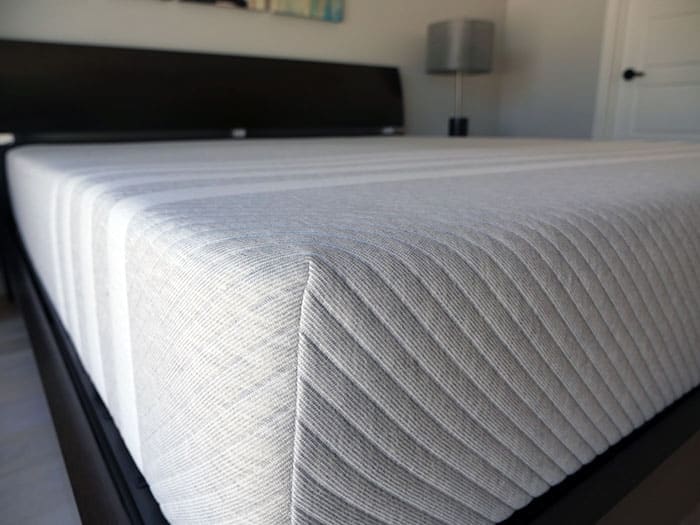
Harvard Medical School points out that not just your sleep position, but sleep itself, can trigger or worsen muscle and joint pain. A study found that men and women who had difficulty falling and staying asleep were more likely to develop chronic musculoskeletal pain in the long run than those without sleep problems.
Now that you know how to sleep on your side, try the above tips and let us know how it goes. Meanwhile, see our step-by-step guide on how to get a better night’s sleep.
FAQ
Sleeping on your back is the healthiest sleeping position. That being said, over 70% of U.S. sleepers claim to be side sleepers.
For optimal side sleeping, consider placing a pillow or wedge between your legs / knees or adding other support pillows. Plush mattresses can be good for side sleepers since they oftentimes allow for deeper contour and hug, which helps support the spinal position of a side sleeper.
Sleeping on your right side can cause your heart to work harder than any other position since it is working against gravity. Right side-sleeping can also increase heartburn symptoms, especially for pregnant sleepers.
Citations
- Domonell, K. (2017, March 31). What sleeping position is best for you? CNN. Retrieved October 6, 2021, from https://edition.cnn.com/2016/03/18/health/sleep-positions-good-bad/index.html.
- Skarpsno, E. S., Mork, P. J., Nilsen, T. I. L., & Holtermann, A. (2017, November 1). Sleep positions and nocturnal body movements based on free-living acce: NSS. Nature and Science of Sleep. Retrieved October 6, 2021, from https://www.dovepress.com/sleep-positions-and-nocturnal-body-movements-based-on-free-living-acce-peer-reviewed-fulltext-article-NSS.
- Yetman, D. (2021, April 16). Is sleeping on your left side bad for the heart? what to know. Healthline. Retrieved October 6, 2021, from https://www.healthline.com/health/sleeping-on-left-side-bad-for-heart.
- Peters, B. (2021, August 19). The best and worst sleep positions for health conditions. Verywell Health. Retrieved October 6, 2021, from https://www.verywellhealth.com/best-and-worst-sleep-positions-for-health-conditions-4158271.
- Help guide: Sleeping posture & positions – physiomed. (n.d.). Retrieved October 6, 2021, from https://www.physiomed.co.uk/uploads/guide/file/16/Physiomed_Sleeping_Posture_Digital.pdf.
- Abdoli Tafti, A., Ghaedi, R., Sajjadi, S., & Dehghan, M. (2020, July 10). Comparison between the effects of preoperative skin traction and under knee pillow on pain relief in the patients with proximal femoral fracture. Scientific Journal of Kurdistan University of Medical Sciences. Retrieved October 6, 2021, from http://sjku.muk.ac.ir/article-1-4628-en.html.
- Rath, L. (n.d.). Body pillows: What it is and which Pillow Type is best for you. WebMD. Retrieved October 6, 2021, from https://www.webmd.com/sleep-disorders/sleep-body-pillows.
- Choosing the best sleep position. Johns Hopkins Medicine. (n.d.). Retrieved October 6, 2021, from https://www.hopkinsmedicine.org/health/wellness-and-prevention/choosing-the-best-sleep-position.
- Say “good night” to neck pain. Harvard Health. (2019, September 10). Retrieved October 6, 2021, from https://www.health.harvard.edu/pain/say-good-night-to-neck-pain.
- Team, B. and S. (2021, August 14). Which sleep position is best for you? Cleveland Clinic. Retrieved October 6, 2021, from https://health.clevelandclinic.org/back-side-stomach-sleep-position-best/.
- Reddy, S. (2013, January 14). Find the perfect sleep position. The Wall Street Journal. Retrieved October 6, 2021, from https://www.wsj.com/articles/SB10001424127887324595704578241642030220064.



